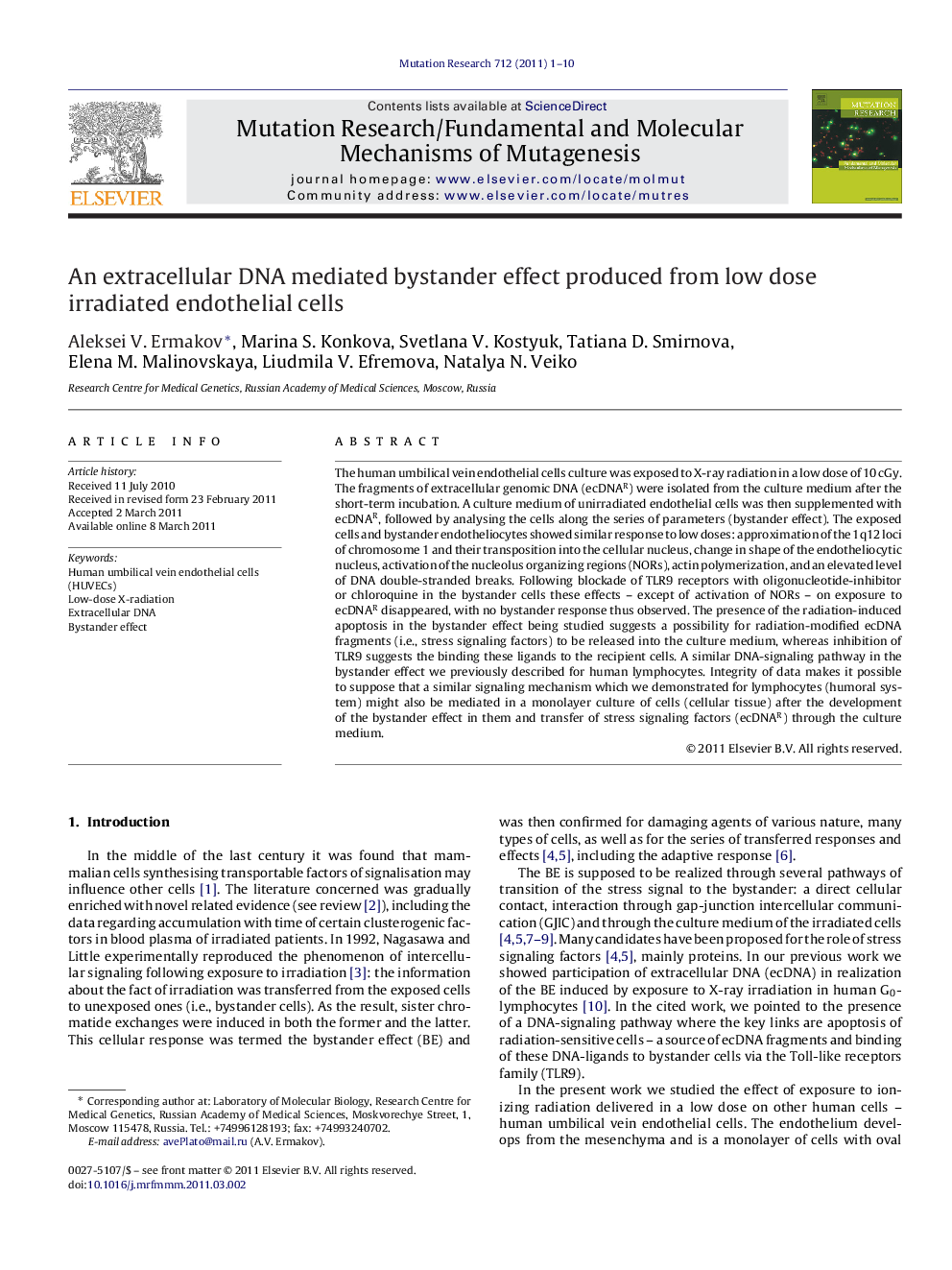| Article ID | Journal | Published Year | Pages | File Type |
|---|---|---|---|---|
| 2146641 | Mutation Research/Fundamental and Molecular Mechanisms of Mutagenesis | 2011 | 10 Pages |
Abstract
The human umbilical vein endothelial cells culture was exposed to X-ray radiation in a low dose of 10Â cGy. The fragments of extracellular genomic DNA (ecDNAR) were isolated from the culture medium after the short-term incubation. A culture medium of unirradiated endothelial cells was then supplemented with ecDNAR, followed by analysing the cells along the series of parameters (bystander effect). The exposed cells and bystander endotheliocytes showed similar response to low doses: approximation of the 1q12 loci of chromosome 1 and their transposition into the cellular nucleus, change in shape of the endotheliocytic nucleus, activation of the nucleolus organizing regions (NORs), actin polymerization, and an elevated level of DNA double-stranded breaks. Following blockade of TLR9 receptors with oligonucleotide-inhibitor or chloroquine in the bystander cells these effects - except of activation of NORs - on exposure to ecDNAR disappeared, with no bystander response thus observed. The presence of the radiation-induced apoptosis in the bystander effect being studied suggests a possibility for radiation-modified ecDNA fragments (i.e., stress signaling factors) to be released into the culture medium, whereas inhibition of TLR9 suggests the binding these ligands to the recipient cells. A similar DNA-signaling pathway in the bystander effect we previously described for human lymphocytes. Integrity of data makes it possible to suppose that a similar signaling mechanism which we demonstrated for lymphocytes (humoral system) might also be mediated in a monolayer culture of cells (cellular tissue) after the development of the bystander effect in them and transfer of stress signaling factors (ecDNAR) through the culture medium.
Related Topics
Life Sciences
Biochemistry, Genetics and Molecular Biology
Cancer Research
Authors
Aleksei V. Ermakov, Marina S. Konkova, Svetlana V. Kostyuk, Tatiana D. Smirnova, Elena M. Malinovskaya, Liudmila V. Efremova, Natalya N. Veiko,
